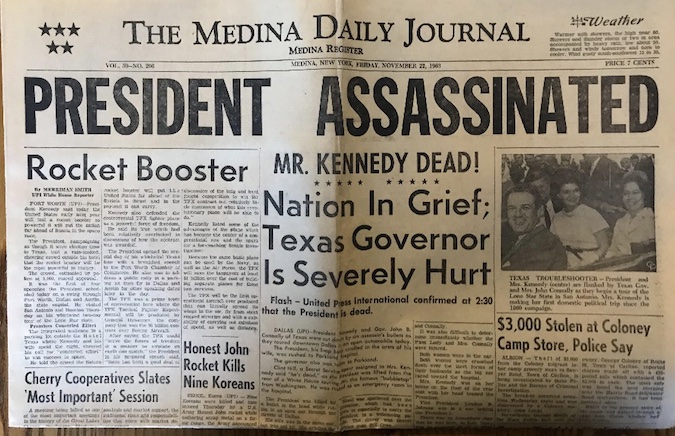Historic printed newspapers provide snapshots from the past
By Catherine Cooper, Orleans County Historian
Illuminating Orleans, Vol. 3 No. 3
Yellowing and brittle, bundles of saved newspapers are discovered in attics, closets, or trunks, having been set aside years past by a now deceased relative or former homeowner.
Once mundane and designed for impermanence, these surviving newspapers have the power to stop us short. Invariably, we pause, carefully unfold the creases, and then fall headlong into the past.
We can infer that these issues were set aside deliberately. Most often, they reported on significant occurrences, dramatic breaking news that resonated deeply. The headlines are short, pithy, two or three words.
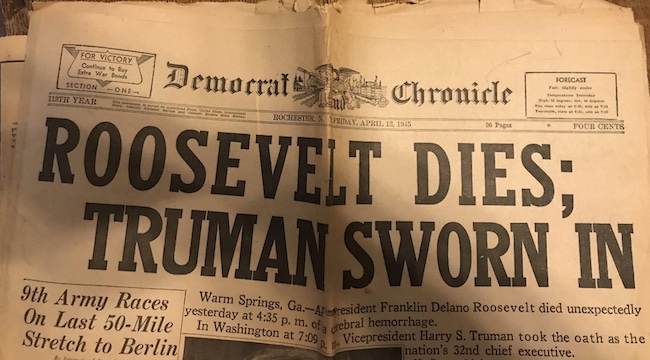
Democrat and Chronicle, April 13, 1945. (Dept. of History collection)
These are issues which reported news that captured public emotions at a particular moment in time, when the whole population was united in the act of learning about a new, dramatic, and consequential event. The newspaper issue, over time, becomes a tangible link to the past, to the moment when that news was read and absorbed.
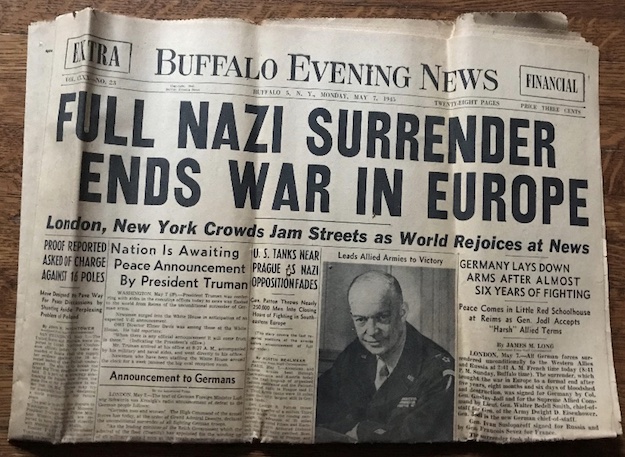
Buffalo Evening News, May 7, 1945. (Private collection)
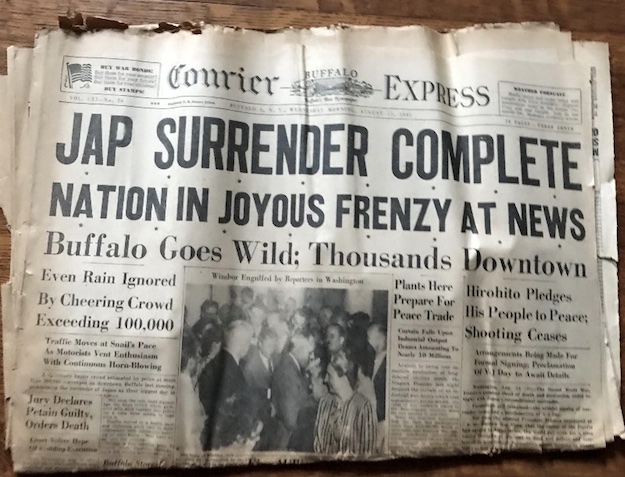
Buffalo Courier Express, August 15, 1945. (Private collection)
Newspapers were the main source of information about local, national and international events for many years. Gradually, radio and then television took over coverage of all but local news. The internet explosion has decimated the newspaper industry.
Newspapers are part of our visual imagination of the past. Documentaries feature newspaper headlines as part of their narrative. Newspapers have been used in movies to set the tone, indicate character, and to advance plot development. In a few short moments, the opening scene of the newspaper being ironed captured the rigid class structure of Downton Abbey. The breakfast scene with the father stiffly reading the newspaper invariably indicated that he disapproved of whatever was afoot.
We can all visualize scenes of newspapers rolling off the presses or of barefoot paperboys standing at street corners shouting “Extra, Extra, Read All About It” or the classic visual of the whistling paperboy jauntily tossing the morning paper onto a front porch.
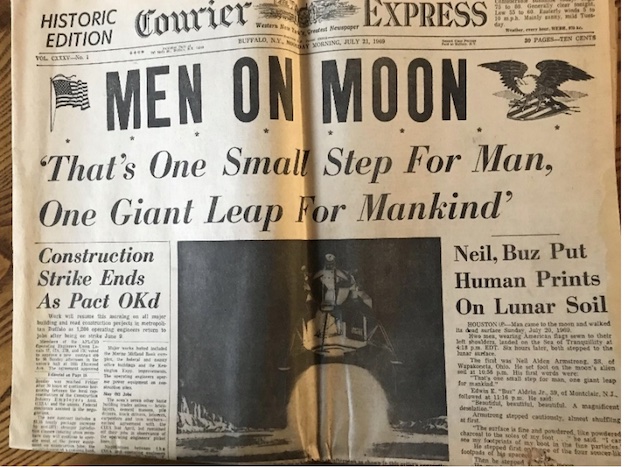
Buffalo Courier Express, July 21, 1969. (Courtesy: Lee-Whedon Memorial Library)
Digital news is fast and accessible but reading a newspaper issue gives context to the event described. The accompanying Page 1 headlines of the Democrat & Chronicle, April 13, 1945 which announce the death of President Roosevelt are: “9th Army Races on Last 50-Mile Stretch to Berlin” and “Enemy Planes Attack Fleet off Okinawa”.
These give a sense of the continuing precariousness of the war, now compounded by the death of the President.
Reading through an entire issue of an old newspaper conveys an intimate sense of daily life at that time. Articles on local government reports, accidents, court reports, marriages, advertisements for cars, clothing, food prices combine to form an immersive snapshot of the past.
Hard as in may be for us to imagine, newspapers may very well be phased out completely in our lifetime. What significant issues have you saved for future generations?
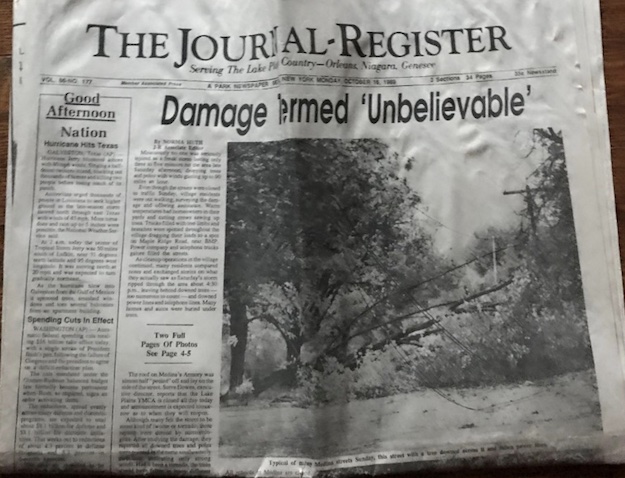
The Journal-Register, October 16, 1989. (Courtesy: Lee-Whedon Memorial Library)

























